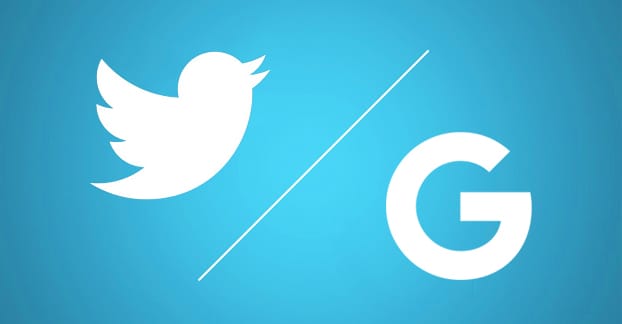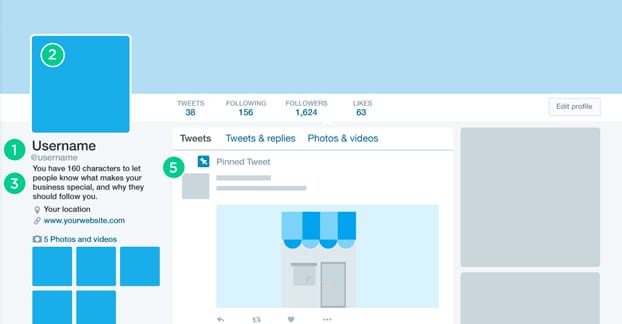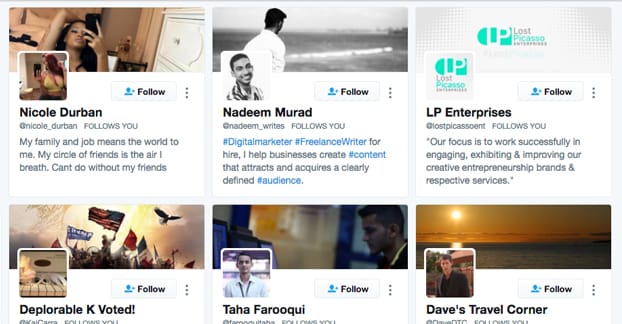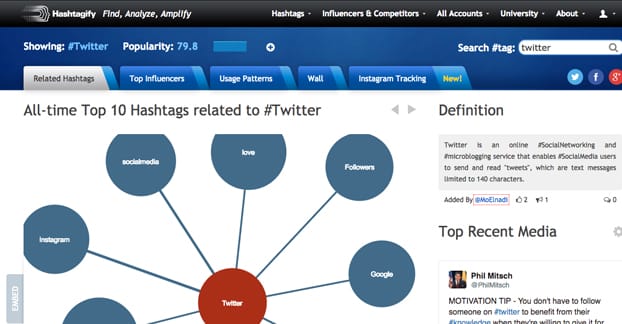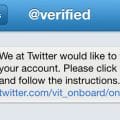Twitter is a commonly cited marketing tool, but it’s usually in a completely different set of articles than those talking about your SERPs ranking. Twitter grows you an audience, gives you an outlet for customer service, and boosts audience engagement. It’s not generally considered something that will raise your Google ranking.
The primary reason for this, I assume, is because Google doesn’t have a wholesale access to Twitter for indexation purposes. They have to crawl it just like they crawl everything else. They tried integration once, with the so-called firehose, but that fell through. Since then, Google has been leery about using third party data streams for their apps, and instead just use their own scraping and crawling engine.
That said, you can still get quite a bit of SEO value out of Twitter, if you know what to do. Or, coincidentally, if someone presents to you an article of tips for what to do.
Set the Stage
You can’t leverage Twitter to get your website a higher footing if you don’t have a good Twitter account. These tips are aimed at helping you set one up.
1. Fill Out Profile Information
Filling out every element of your Twitter profile as completely as possible gives Google as much information as possible to help rank both your Twitter profile and your associated brand presence. In particular, you should pay attention to the location field, your website link, and your display name.
2. Link to Your Website
You have to decide whether you want to link to your home page or to a particularly good piece of content. I prefer the homepage for your basic profile link. If you want to link to a flagship piece of content, you can do it using your pinned tweet. Don’t forget to make use of your pinned tweet slot, and make sure to rotate it every few weeks so it’s always relevant.
3. Remain Active on a Daily Basis
The more often you post, the more content there is on your feed. Every tweet is a chance for Google to index you, and a chance for users to find you and engage with you. You want as many opportunities as possible for both. I recommend a minimum of 3-5 tweets per day, though you can go much higher if you want.
4. Interact with Your Audience
Engagement is the number one most essential aspect of using Twitter. When your users respond to your tweets, you need to do so in kind. Keep conversations going. For a great modern example of the kind of explosive popularity you can get, just check out the recent Wendy’s social media trends.
Crosslink and Network
Having a good profile is one thing, but it doesn’t do much if you don’t have links between it and the rest of your marketing profile. In particular, if you want Twitter to help your website, the two need to be associated.
5. Use Social Media Buttons
You want people on your website – and Google search spiders – to be able to access your Twitter from your blog. In addition to posting a link or a feed embed box in the footer or on an about page, you should use social sharing plugins on your blog. I prefer Social Warfare, though I will admit they can be a little over the top if you don’t need much more than basic buttons. The speed makes them top-tier.
6. Use a Click to Tweet Plugin
What better way to get your audience to use Twitter than to integrate Twitter with your blog experience? I like to set aside quotes from specific sections of each post and run them through a click to tweet plugin. These plugins make it easier than ever for your audience to share your post with a single click.
7. Link to Twitter from Facebook
Cross-linking between Facebook and Twitter is only natural, but you should be careful with automatic posting between the two. In particular, Twitter users love hashtags and make great use of them, but they don’t work properly on Facebook. In fact, studies have shown that using hashtags on Facebook can actually decrease the reach and engagement of that post.
8. Link to Twitter from Other Social Networks
I primarily mentioned Facebook on its own because of the proliferation of automation tools you want to avoid. Other social networks have similar tools, but you can get away with using them more. For example, a cross-post between Twitter and Instagram wouldn’t stand out in any way. Just make sure to network all of your social media accounts together, regardless of what they are.
Advertising Twitter Presence
Once you have your Twitter set up and rolling, you can make use of external sources of advertising to get more people into the fold. Naturally, you’ll have people bouncing between Twitter and your site, but you want to bring more people from other sources into that cycle.
9. Put Twitter in Email Signatures
You probably use email quite a bit. Depending on your business, you might use it more than you use a phone. I know I’m sending out dozens or hundreds of mails per day, and that’s not even counting the black hat dedicated spam campaigns I’m definitely not using. The point is, your email signature is a great place for a Twitter link.
10. Add Username to Business Cards
Many people don’t use business cards these days, or don’t use them as much as they used to. Still, if you find yourself in a position where you can hand them out or leave them for takers, they can be a great source of new followers. The key is to make sure the places and people you give them to are people who would be interested in your business, not just random stores in the mall near your workplace.
11. Mention Username in Assorted Advertising
Any other source of advertising you have, you can mention a Twitter username. They’re short, easy to convey, and easily identifiable. All you need is the Twitter logo, or even just the @username, which is a format few other sites use. In TV or print, it’s just as recognizable to say “Twitter @businessname” to convey the information.
12. Pay for Exposure with Twitter Ads
Twitter advertising is like any other source of PPC traffic; it can be as expensive or as cheap as you make it, as good or as bad as your targeting, and only as effective as your message. I highly recommend using them if you have the budget to do so, but I also highly recommend learning how to use them before investing all-in.
Expand Your Audience
As you grow your Twitter presence, you want to get as many people on the site as possible to follow your account. Chances are you aren’t in a position to get millions of followers, but you could end up with thousands or tens of thousands, and that’s a lot to manage.
13. Follow Interesting Accounts
Following interesting and relevant accounts serves two purposes. First, it lets you bait them into following you back, though you’ll have a pretty low turnover rate for that. Second, it gives you sources of great information you can retweet later, to the benefit of your existing followers. Remember, you don’t want to just be posting your own stuff all the time, you want to curate good content too.
14. Link to Bait Influencers
When you write blog posts, link to something an influencer on Twitter posted. Then when you post a link to that blog post on Twitter, @mention the influencer and mention that you linked to them. This gives them an opportunity to respond, either by liking and retweeting the content, replying to the content, or linking to it on their own blog. No matter which happens, you come away with value.
15. Run Twitter Competitions
Twitter competitions can be great for getting more followers, particularly if you have some good incentive as your prize. There are rules, however, both for running social media contests and for running them effectively. The last thing you want to do is fluff up your audience with people who aren’t going to engage, click links, retweet, or care about anything you say.
16. Create Influencer Lists
This is another influencer marketing bait technique. Make a Twitter list titled something like “Awesome marketers” or “cool niche people” or whatever you like. Add people to the list who you think would be likely to engage with the list or would at least give you a look because you added them. Sometimes you’ll get mentions or follows out of it, and even more so if you can grow the list into a big thing.
17. Avoid Protecting Tweets
Setting your tweets to protected mode means only people who follow you can see them, and it means you have to approve people before they can follow you. It’s a good privacy measure, but it prevents verification and it means people will be unable to see your quality content. “People” in this instance also includes Google, so you’ll basically destroy any SEO value your account has if you hide it.
Getting Google’s Attention
You want Google to find and index your Twitter account, and you want that value to feed back into your website. You need to exploit every SEO trick in the book to get it to happen.
18. Use Relevant Keywords Frequently
Keywords make the world go round. Some keywords will organically show up in your tweets, and others can be used as hashtags. Make sure to always have some when you’re posting, to maximize exposure and association between your brand and those keywords.
19. Curate Quality Content
Curating content gives you more exposure as a source of good value. You won’t be credited as the primary source for the content, but you will get value for adding value to it with your audience.
20. Make Good Use of Hashtags
Hashtags require a little research to use properly. You need to find tags that aren’t branded, and that have a decent amount of traffic, so that when you use them, other people see your content. Otherwise you’re just wasting some of your slim character limits.
21. Use Your Handle in Guest Post Bios
When you guest post on other sites, you’re getting value to your site through a link and getting value to your brand through name recognition. However, you can expand upon this by adding your Twitter handle to your author bio. This is often approved even if other links aren’t, and it’s a good way to get more exposure and more value to your Twitter account, and thus, to your blog.
22. Make Use of Images
Image-focused tweets, or at the very least tweets with images in them that are partially related, go a lot further in the timeline than tweets without images. People see images and naturally want to read the captions, even if they’re not particularly interested in it. Centuries of advertising have driven us to this point as a culture, so you might as well exploit it.
23. Tweet News Whenever Possible
It’s hard to get yourself certified as a news source, but you can at the very least monitor your industry and niche news and comment on it as soon as possible when it happens. Eventually, people will recognize that you’re always on top of things, and they’ll come to you for thoughts and analysis. This means you might even start showing up in news-related searches for your industry.
24. Get Yourself Verified
Twitter verification is now public, but it’s still a long and complex process that is largely shadowed in mystery. In other words, people don’t quite know what it takes to be verified. You can apply, but you might also want to take steps to make sure you’re more likely than not to be approved. Verification can be very beneficial, and Google pays a lot more attention to verified accounts than they do to others.
25. Get More Retweets
Data shows that retweets are worth more than the original post in many cases. A retweet means someone thought your content was worth sharing, and more retweets mean a larger weight to the content. It’s generally a good idea to get as many retweets as you can.
